Present simple how to use
Present simple how to use
Present simple ( I work)
Present simple: form
(full form) do not
Present simple: spelling
For other verbs, the spelling changes are:
Have, go, do and be are irregular.
Present simple: uses
General truths and facts
We use the present simple to talk about general facts that are always true and permanent about the world:
Ten times ten makes one hundred. (10 x 10 = 100)
There is always a holiday on the last Monday in August in the UK.
Time passes very quickly when you get older.
We use the present simple to talk about general facts that we think are true and permanent at the present time:
Mrs Clare doesn’t teach me but she teaches my sister.
Do you live in Glasgow? My cousin lives there too.
Regular and habitual events
We use the present simple to talk about regular or habitual events. We often use always, often, usually, sometimes, never and other frequency adverbs for regular and habitual events:
How do you get to work? Do you get the bus?
I read every night before I go to sleep.
We always have a holiday in the summer. We never work in August.
We usually fly to France when we go. Lorea doesn’t like the ferry. It makes her feel sick.
Instructions and directions
We use the present simple when we are giving instructions or directions. We often use ordering words, such as and, first and then with this use of the present simple:
You take the train into the city centre and then you take a number five bus. You don’t get off at the museum. You get off at the stop after the museum.
[giving instructions before a test]
So what you do is … you read the questions first and then you write down your answers in the box. You don’t write on the question paper.
Stories and commentaries
We often use the present simple to describe a series of actions – one action after another. We see this especially in stories, summaries of stories or reviews:
[talking about the series of events in a novel]
Alex doesn’t ring back at midnight … she waits till the morning to ring, and they get annoyed with Liz when she goes on … they know she ’s got plenty of money by their standards …
The present simple is often used by sports commentators to give commentaries or report actions as they are happening:
Immediate reactions
We use the present simple, often with verbs of senses and perception, to talk about feelings and reactions at the moment of speaking:
Do you think that meat is ok to eat? It doesn’t smell very good.
[talking about the colour of a dress]
I don’t like the colour. I think I look terrible.
It seems a bit quiet in here. Where is everyone?
Don’t you believe me? It’s true, honestly.
I promise, I swear, I agree (speech act verbs)
We use the present simple with speech act verbs (verbs which perform the act that they describe):
We also use the present simple in a similar way in formal statements and in business or legal communications:
I attach the original signed copies for your records.
On behalf of the Society, and particularly those involved in medical work, I write to thank you for your kind gift of £20,000 … (more formal than I’m writing to thank you …)
Timetables and plans
We use the present simple to talk about events that are part of a future plan or timetable:
The lesson starts at 9.30 tomorrow instead of 10.30.
They don’t start back to school until next Monday.
We can also often use will in these sentences, with no change in meaning:
The lesson will start at 9.30 tomorrow instead of 10.30.
Present Simple Tense: полный гайд по обучению детей и взрослых
Для преподавателей тема Present Simple — одна из самых простых в грамматике английского языка. Но студенты с нами не согласятся! Многие ученики и их родители обращаются к репетитору именно с таким запросом: помочь наконец-то выучить настоящее время.
В этом гайде предлагаем разобраться, как лучше всего объяснять тему Present Simple детям и взрослым.
Содержание:
1. Объясняем, что такое Present Simple
На первый взгляд, Present Simple — это грамматическое время английского языка, которое используется для обозначения обычных, регулярных действий в настоящем. Но как только ученики встречаются с другими случаями употребления этого времени, возникают вопросы.
Чтобы избежать недопонимания, можно держать под рукой или в кабинете табличку или карточки с яркими примерами.
Объясняем детям
The first thing kids naturally learn is always Present Continuous because they can say a lot of things about their little activities this way. Then things like Mom I such a good dancer start happening, so a lot of omissions of to be, and they always self-correct. That’s when we teachers step in!
Объясняем взрослым
Вот как я объясняю «природу» этого времени своим взрослым ученикам: Present Simple — это как факт, одноразовый или регулярный. Факт, который происходит независимо от нашего на него влияния. Смех продлевает жизнь, Вася не любит своего соседа, Земля вращается вокруг Солнца (всегда, каждый день, по утрам и вечерам) — это все объективные факты. А есть факты регулярные, которые повторяются как единично, так и регулярно: я встаю рано каждый день, я не работаю по выходным (единично и регулярно).
Я объясняю, что Present Simple — это все, что имеет концепцию факта, который существует или происходит в принципе, либо факта, который повторяется с какой-то периодичностью/регулярностью. И дальше привожу маркеры always, every day, in the morning, occasionally, rarely, often, etc.
2. Запоминаем правила образования формы глаголов
Выучить связку I, you, we, they + глагол обычно удается без проблем. Сложности начинаются, когда дело касается третьего лица единственного числа, вспомогательных глаголов и to be.
Преподаватель английского Юлия Яковлева советует постепенно переходить от простого к сложному с помощью шаблонов.
Если продолжить наш пример с котом и заполнить таблицу, получится необходимая лексика.
Ученик может использовать слова из таблички, чтобы составить предложение о себе с помощью всего двух шаблонов.
Следующий шаг — рассказать о семье, друзьях, знакомых, коллегах. Новые шаблоны:
Отдельно обращаем внимание на то, что в английском нет разделения на ты и вы, но есть всеобщее YOU, которое дружит с ARE. Этим оно схоже с THEY. И в целом все МЫ очень похожи, поэтому WE тоже употребляется с ARE.
Что насчет шаблонов с глаголами? В большинстве случаев, чтобы говорить о действиях других людей, мы будем использовать ту же форму, что и в рассказе о себе.
— To Be
Объясняем детям
Я объясняю тему и взрослым, и детям наглядно. Например, для глагола to be у меня есть раздаточные материалы с пчелками и цветами.
Kids learn communicatively, they aren’t little grammarians. I normally use TPR, songs, chants and visuals for my students — anything that makes them internalise this grammar. If they’re a bit older, they like paradoxical stuff. For example, I once explained there is/there are through getting them to think: Who here has one shoe on, or one sock on? If you do, feel free to say there is shoes on my feet, if you don’t, then don’t say that!
Объясняем взрослым
Глагол to be не переводится на русский, но чтобы запомнить его быстрее, можно сначала переводить пословно: мне есть 15 лет, ты есть красивый.
— Do/Does
Объясняем взрослым
— Have got / Has got
Объясняем детям и взрослым
3. Учим маркеры времени Present Simple
I use a hack when teaching students of different nationalities that helps get them to talk about their cultures and cultural norms. I ask them to remember what they always, often, rarely, never do. Then we colour code the words from red light (stop aka never) to green light (go aka always).
Моим ученикам нравится лесенка приоритетов. Когда мы уже потренировались составлять предложения в controlled practice, я рисую лесенку и прошу учеников распределить их активности по уровням частоты событий в их жизни. После «лесенки» ученики понимают, что за каждым приоритетом стоят маркеры времени. Свои регулярные действия ученики знают, поэтому легко запоминают маркеры в формате лесенки частотности.
Взрослым ученицам проще запомнить always по названию известного бренда, которым всегда надо пользоваться несколько дней в месяц.
Именно эти маркеры времени помогают отличить Present Simple от других времен, например, Present Continuous.
4. Объясняем разницу между Present Simple и Present Continuous
У Present Simple и Present Continuous разные грамматические формы и случаи употребления, но ученики все равно часто их путают. Например, оба времени используются, чтобы сообщить факт в настоящем времени. Вот как Cambridge Dictionary предлагает объяснить разницу:
Другой подход — приучать студентов ориентироваться на слова-маркеры, сигнализирующие о времени.
Еще одним маркером времени являются state или stative verbs — глаголы, описывающие состояние, а не действие. Чтобы не путаться, достаточно запомнить, что глаголы состояния не употребляются в Present Continuous. Если в задании вида “I (believe) her” нужно раскрыть пропуск, ученик сможет верно определить необходимое время, если посмотрит на глагол.
К глаголам состояния относятся слова, описывающие:
Не забудьте потренироваться в употреблении глаголов, которые могут быть глаголами состояния в зависимости от контекста, а могут ими не быть.
5. Закрепляем и отрабатываем на практике
Поэтому — как можно больше практики в речи с уже известными словами. Чем больше, тем лучше. Даже если кажется, что вы спрашиваете одно и то же, меняйте подлежащее. Сначала про ученика, потом про его сестру, потом про кошку, потом про любимого книжного героя. Поставьте себя на место студента и дайте ему как можно больше разговорной практики даже с таким «простецким» правилом!
Какие игры можно использовать, чтобы отрабатывать Present Simple на практике — советует Маргарита Феженко:
Профессии
Преподаватель загадывает род занятий, затем описывает, что делает человек, а ученик должен угадать, что это за профессия. Затем меняемся ролями.
Обмен опытом
Например, преподаватель рассказывает топ-5 своих активностей, а ученики делятся своими. Затем добавляем маркеры времени, говорим, как часто это делаем, и задаем друг другу вопросы.
Интервью
Близкий role-play никто не отменял! Взрослым ученикам приятно почувствовать себя звездой «на интервью у Дудя», а детям весело задавать вопросы их любимым героям.
Преподаватель-нейтив Марни Эссе предлагает ученикам описывать чувства, ощущения и опыт, чтобы лучше закрепить тему.
Where am I?
Во время игры один ученик описывает, что он видит, чувствует на вкус, к чему может прикоснуться, а другие ученики угадывают, где он находится.
Кое-что еще:
Желаем продуктивных уроков! 😉
Расскажите про свой опыт: какие были трудности с объяснением Present Simple, какие были удачи и находки? Забавные истории?
Коллеги, поделитесь впечатлениями, как вам статья? Хотели бы, чтоб мы готовили больше таких подробных материалов? А на какие темы? Что мы не учли или забыли?
Using the Present Simple Tense
The present simple tense isn’t always so «simple» for learners but I promise this explanation will make things much clearer. In this section, we’ll look at the different uses of the present tense.
Present simple tense use #1: General truths & facts
We use the present simple to talk about things that are generally true or to state facts.
Use #2: For mostly permanent situations
We use this tense to talk about situations that are mostly permanent, jobs or hobbies and things that always happen.
Use #3: To describe the frequency of actions
We use the present simple to describe how often we do things, from never to always and everything in between. Sometimes this describes a routine or habit (on Saturdays, once a week, usually, every summer, always. We also use this to describe something we don’t do regularly: now and then, once in awhile, rarely, sometimes, when I’m tired).
Remember: Adverbs of frequency (e.g., never, rarely, sometimes, usually, always) come before the verb.
Examples:
Use #4: Actions set by a time table or schedule
We use the present simple tense for actions and events that are set by a timetable. This is often something that is set by an organization. Please note that this can actually describe an event happening in the future.
Use #5: To describe a present state
We use the simple present with verbs that express opinions, states, feelings and emotions (not actions).
Common stative verbs include:
be, belong, seem, realize, think, believe, understand, like, love, hate, hear, smell, see, think, understand, want, wish.
If you need to review how to form the present simple tense please check this page. I go over the positive and negative forms, questions, spelling and give lots of examples.
The Present Simple Tense
(also called the simple present tense)
We need to use the Present Simple a lot in English, so it’s really important to understand it well. Many students have problems with the form (or how to make it).
Simple present tense with ‘be’
The verb ‘be’ is different from the other verbs in this tense. Let’s look at ‘be’ first:
Here’s the positive form (positive means a normal sentence, not a negative or a question. This is sometimes called ‘affirmative’)
| Positive | Positive Short Form |
| I am | I‘m |
| you are | you‘re |
| he is | he‘s |
| she is | she‘s |
| it is | it‘s |
| we are | we‘re |
| they are | they‘re |
Next, here’s the negative. It’s very easy. You only add ‘not’.
| Negative | Negative short form |
| I am not | I‘m not |
| you are not | you aren’t |
| he is not | he isn’t |
| she is not | she isn’t |
| it is not | it isn’t |
| we are not | we aren’t |
| they are not | they aren’t |
And finally let’s talk about the question form of the present simple with ‘be’.
Firstly, here’s the ‘yes / no’ question form:
If you’d like to make a ‘wh’ question, you just put the question word at the front:
Present simple tense with other verbs
With all other verbs, we make the present simple in the same way.
The positive is really easy. It’s just the verb with an extra ‘s’ if the subject is ‘he’, ‘she’, or ‘it’. Let’s take the verb ‘play’ as an example:
| Positive (of ‘play’) |
| I play |
| you play |
| he play s |
| she play s |
| it play s |
| we play |
| they play |
To make the negative form, you need to use ‘do not’ (don’t) or ‘ does not’ (doesn’t).
| Negative (of ‘play’) | |
| I do not play | I don’t play |
| you do not play | you don’t play |
| he do es not play | he do es n’t play |
| she do es not play | she do es n’t play |
| it do es not play | it do es n’t play |
| we do not play | we don’t play |
| they do not play | they don’t play |
How about the question form of the present simple tense?
We use ‘do’ or ‘does’ before the subject to make the ‘yes / no’ question:
Just like with ‘be’, if you’d like to make a ‘wh’ question, you just put the question word at the front:
Need more practice? Get more Perfect English Grammar with our courses.

Welcome to
Perfect English Grammar!
Welcome! I’m Seonaid and I hope you like the website. Please contact me if you have any questions or comments.
Understanding and Using the Simple Present Tense
The present simple tense is typically one of the first verb tenses that new English students learn. It is used to describe action that takes place on a regular basis. The present simple also can be used to express feelings, facts, opinion, and time-based events. Don’t confuse the present simple tense with the present continuous tense, which is used to describe something that is currently taking place. For example:
Present simple tense: I catch the bus at 8:50 a.m. to go to work.
Present continuous tense: I am riding the bus to work.
Want to know more about verb tenses? Check out this illustrated verb timeline, then use these learning strategies to improve your English skills.
Practicing the Present Simple Tense
One good way to improve your English speaking skills is to use role-playing exercises. With a classmate or a friend, try using the following dialogue to practice the present simple tense.
Mark: Hello, Can I ask you some questions for an interview?
Jennifer: Yes, I can answer some questions.
Mark: Thank you for taking the time. Now, first question: What do you do?
Jennifer: I work in a library. I’m a librarian.
Mark: Are you married?
Jennifer: Yes, I am.
Mark: What does your husband do?
Jennifer: He works as a policeman.
Mark: Do you usually have dinner together?
Jennifer: Yes, we do.
Mark: How often does your husband exercise?
Jennifer: He sometimes exercises four times a week. But, he usually exercises only twice a week.
Mark: Where do you like to go on holiday?
Jennifer: We rarely go on holiday. However, we like to go to the mountains if we can.
Mark: What type of books do you read?
Jennifer: I often read horror stories.
Mark: Thank you very much for answering my questions.
Jennifer: You’re welcome!
When To Use
Notice from the above dialogue and following chart that the present simple is often used to describe what we do every day. We use verbs of frequency (always, sometimes, usually, etc.) which indicate a habit. Other instances that call for the present simple tense include:
Permanent or long-lasting situations
Where do you work?
The store opens at 9 a.m.
She lives in New York.
Regular habits and daily routines
I usually get up at 7 a.m.
She doesn’t often go to the cinema.
When do they usually have lunch?
Facts
The earth revolves around the sun.
What does «strange» mean?
Water doesn’t boil at 20 degrees.
Feelings
I love walking around late at night during the summer.
She hates flying!
I don’t want to live in Texas.
Opinions and states of mind
He doesn’t agree with you.
I think he is a wonderful student.
What do you consider your best accomplishment?
Timetables and schedules
The plane leaves at 4 p.m.
When do courses begin this semester?
The train doesn’t arrive until 10.35 a.m.
Verb Conjugation
The present simple tense can be expressed in three ways: positive, negative, or as a question. Conjugating the positive form is easy for the first- and second-person references such as «I» or «you.» Just use the root form of the verb. For third-person references, add an «s» to the verb. For example:
I eat lunch at noon.
You play tennis at noon.
He walks to school every day.
She watches TV in the evening.
It sleeps under the couch.
We study English at school
They eat lunch at noon.
The negative form uses the helping verb «do» for first- and second-person references and «does» for the third-person. You can also express the negative form as a contraction. For example:
I do not leave work early on Mondays.
You don’t like to watch TV.
He does not understand the question.
She doesn’t ride a bike.
We do not have any money.
They don’t leave at noon.
If the present simple tense is expressed in the form of a question, use «do» or «does,» followed by the subject, and the verb in questions. For example:

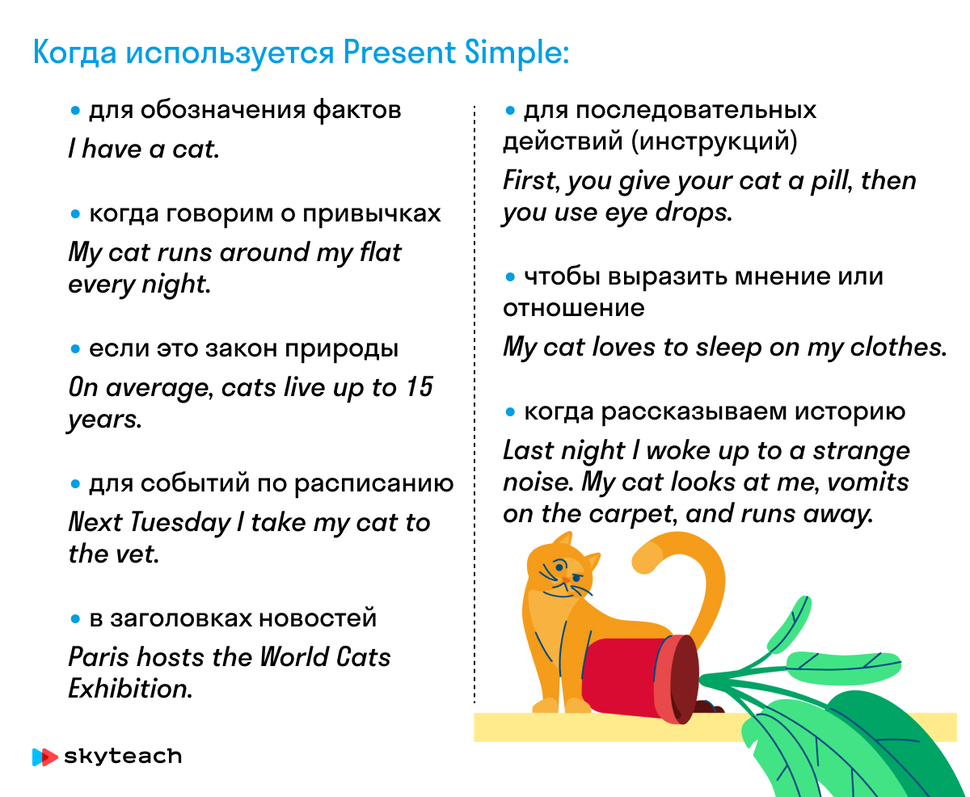
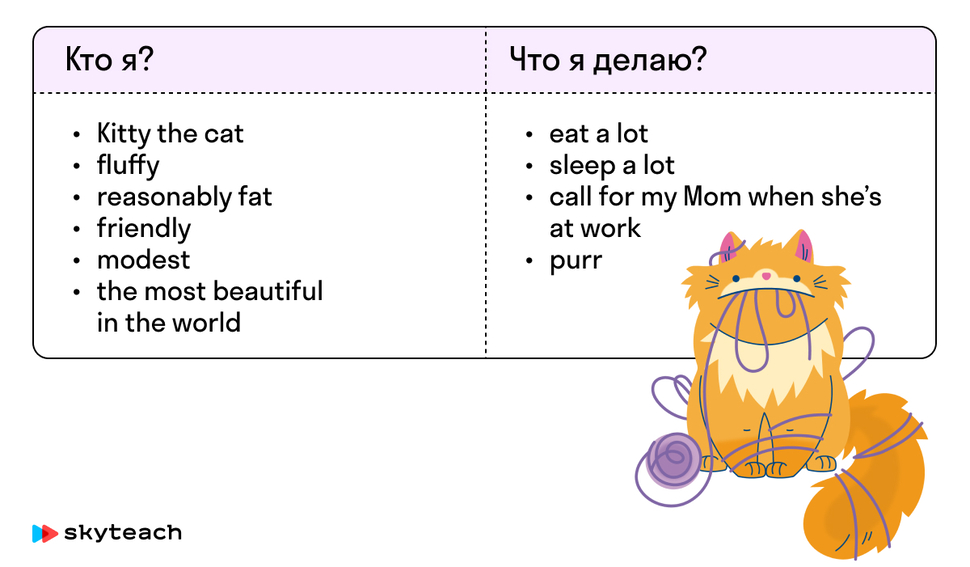





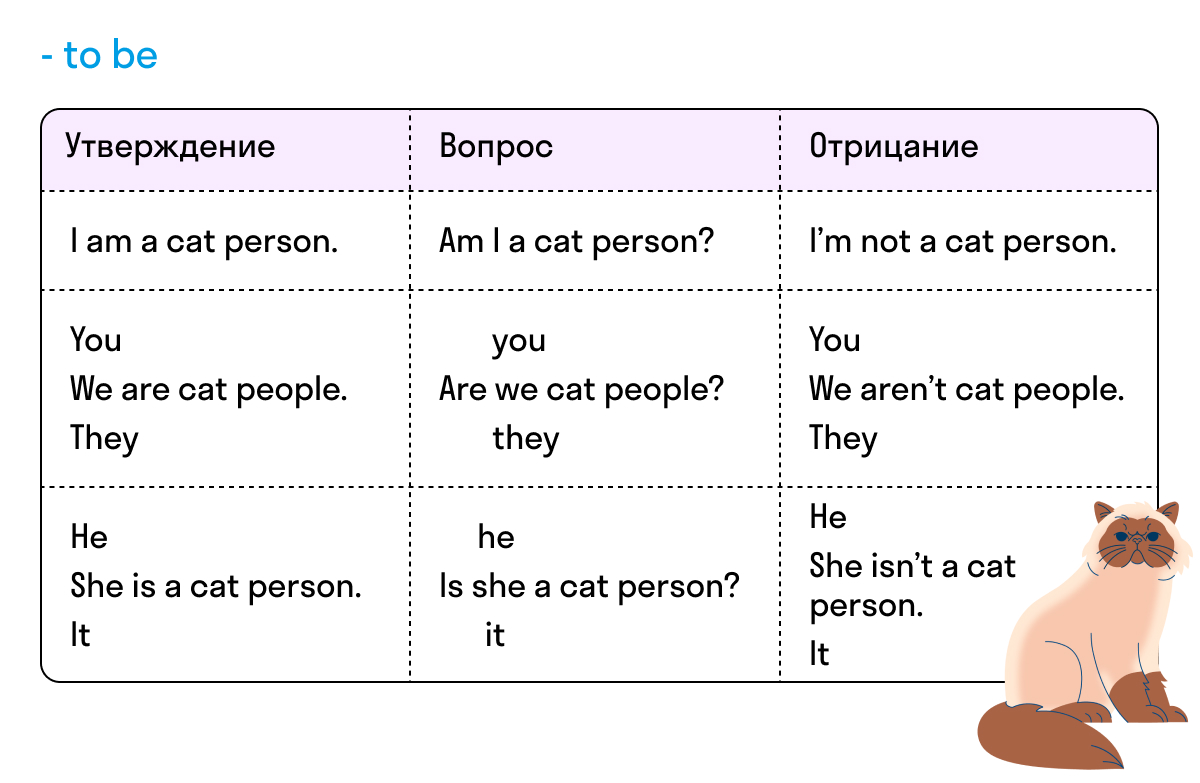
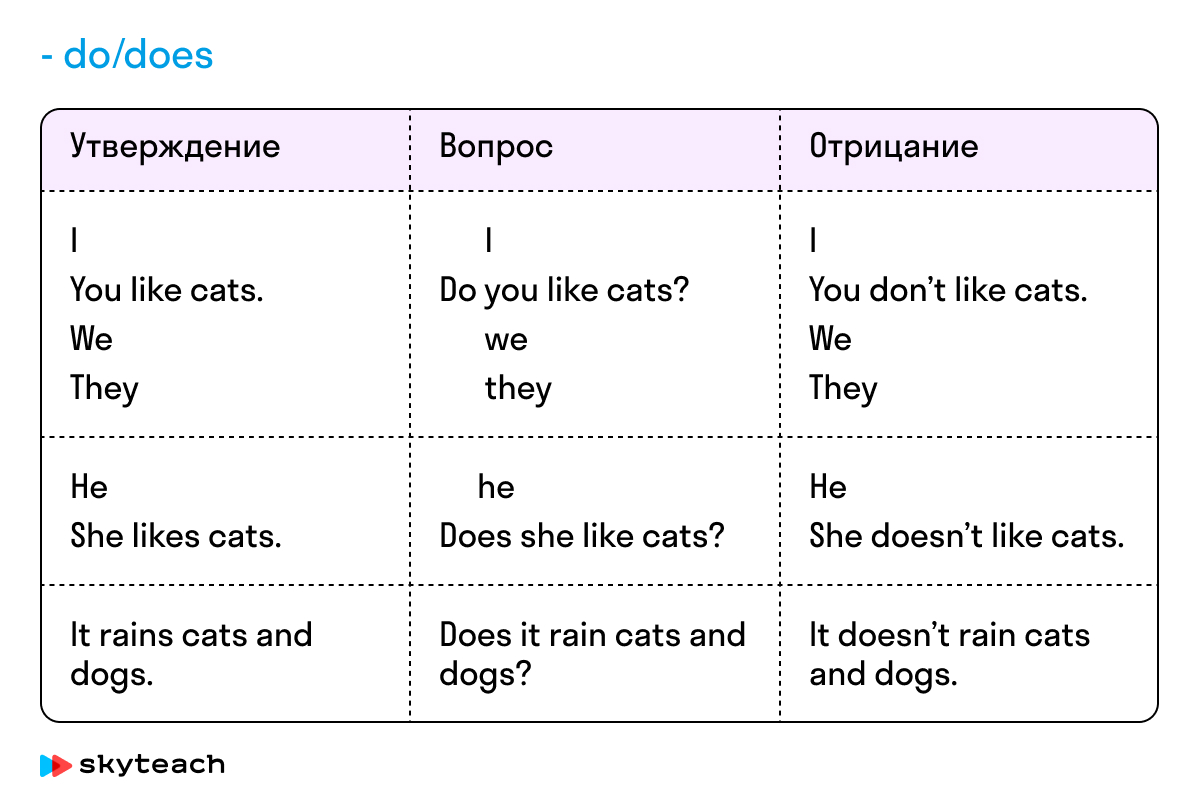
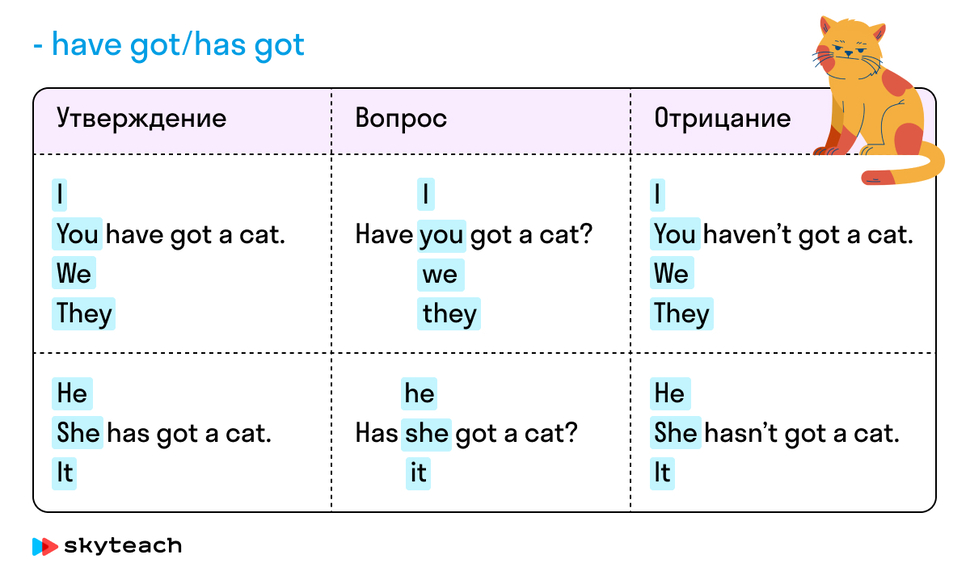


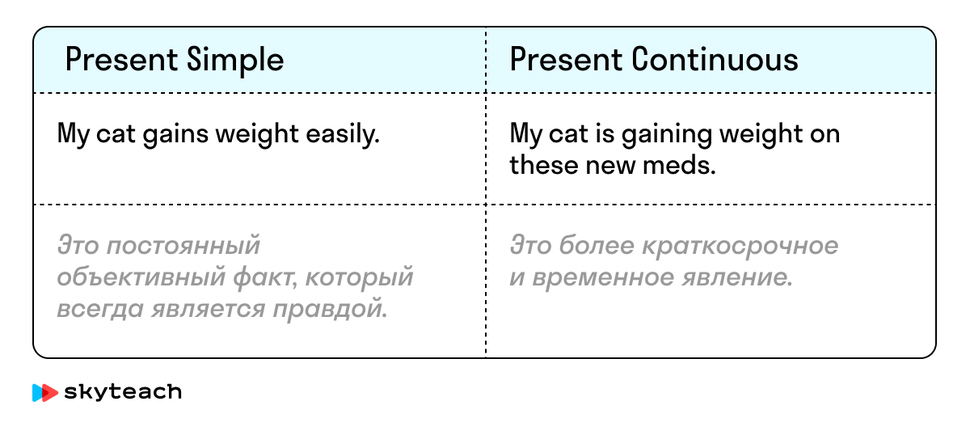



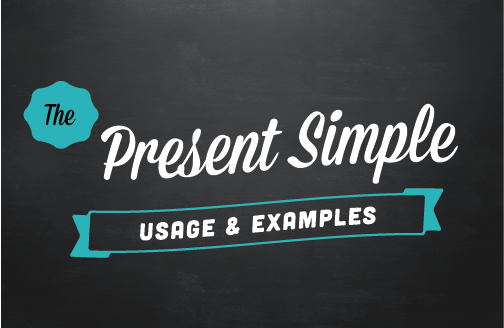



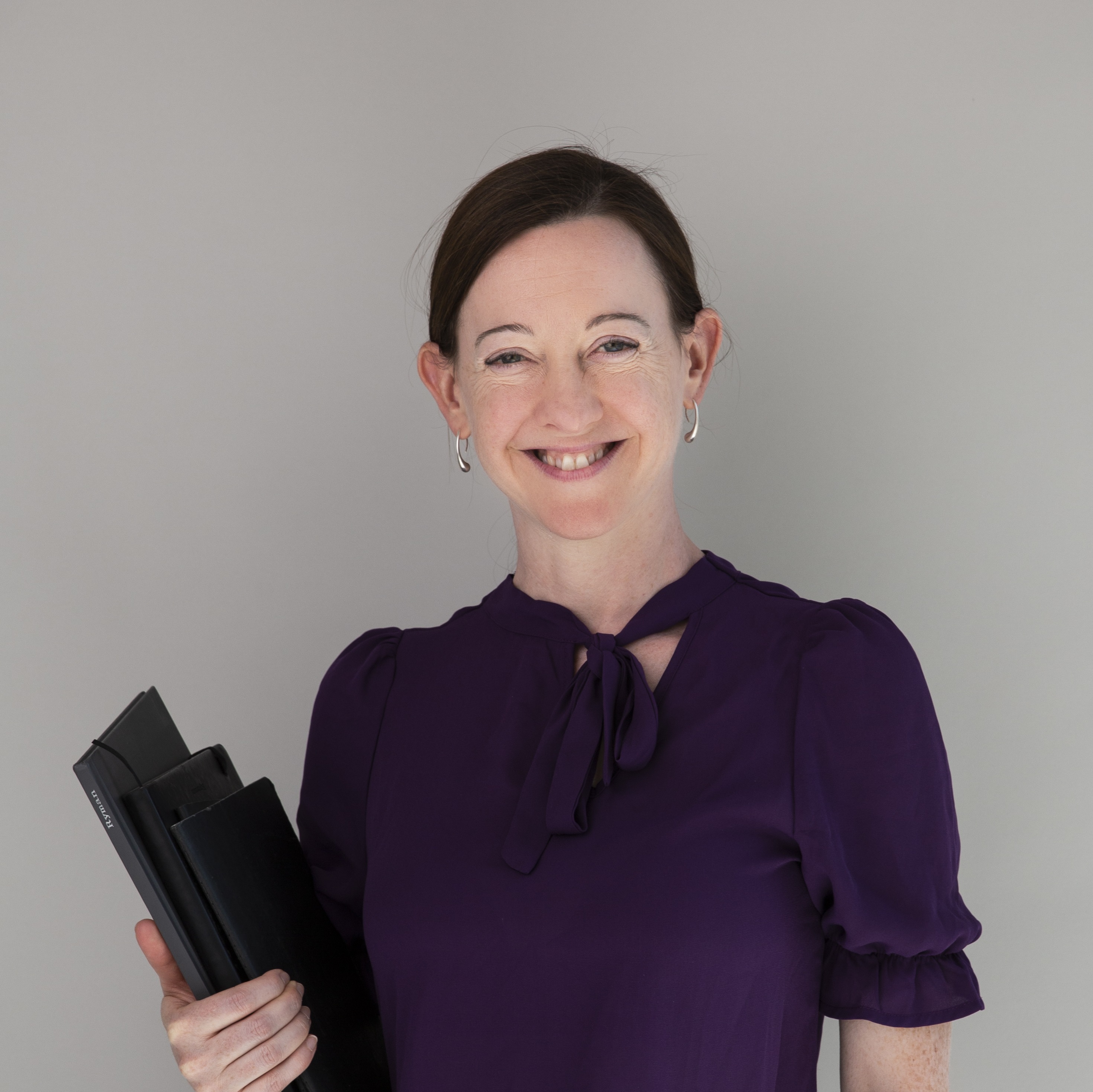
:max_bytes(150000):strip_icc()/GettyImages-161923965-58dc1f955f9b58468335d09a.jpg)